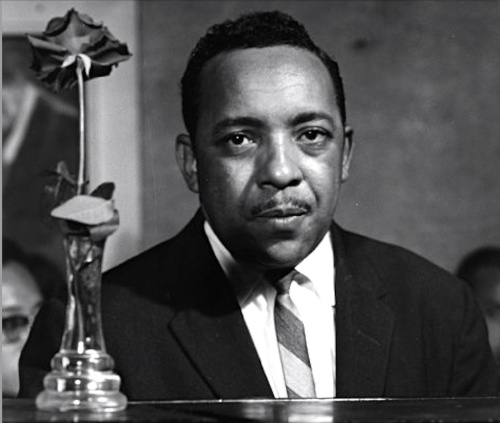Ethereal Ebony: The Majesty of Red Garland

Red Garland
Both serenity and intellectual wonderment are spawned by the pianistic constructions of Red Garland, a musician who achieved one of the most elusive pursuits of all - making the most ubiquitous instrument in Western music history, the piano, his own. Red’s sound centers around chiseled chords, fresh and bold as alpine forests, together with melodic invention and embroidery conjuring an ancient Sanskrit master jeweler spinning beveled and faceted emeralds, rubies, sapphires, ivory and gold into cascading waterfall explorations of the Himalayan mountain pools bordering rasa and mind. It would appear that Garland’s style – only the surface elements – is the musical persona most imitated by cocktail lounge pianists. Imagine the rapturous shock if one had meandered in the manner of Owen Wilson from Midnight in Paris into the elegant, subdued piano bar of the Huntington Hotel on Nob Hill in San Francisco during the fifties, sat down in a plush leather chair by the active fireplace, ordered a scotch, and then fixed upon none other than Red Garland at the piano. And you could even make a request! Focusing my attention on Red this past year, it is strikingly apparent his influence on Bill Evans was enormous in terms of rasa or expression, sonority, pacing, and touch, something that is rarely credited for reasons that escape me, other than simple oversight. Historically speaking, Evans followed Garland chronologically in the Miles Davis Quintet. Evans has long been my favorite jazz pianist, yet he has been surpassed in interest for myself this past year by Garland. There is a transcendental magnificence emanating from Red’s piano that remains unmatched, except perhaps by the gospel and spiritual transcriptions Don Shirley created and performed on piano. I once attended a piano recital given by Don at Carnegie Hall, and the sound was astonishing, with an all-encompassing earthiness that seemed to rise from the very floor of the auditorium. It will be fascinating to see how my admiration for Garland’s recordings evolves, especially in comparison to Bill Evans. Regardless, the full import of Red’s artistry proved to be a developed taste for myself, passing over my head until well after I had absorbed some of the expressive and improvisational nuances of Indian classical music, which afforded me a more sophisticated and subtle musical sense that may be applied beneficially to other forms. In addition to his extraordinary piano trio albums, it is no accident that Garland is the pianist on a number of the finest horn-led recordings in jazz history, including Lush Life with John Coltrane and Donald Byrd, and Tenor Madness with Sonny Rollins and Coltrane. Red’s accompanying skill is as profound as his soloing. For those new to Red, pay a visit to "Soul Junction," afterwards dropping by "Over the Rainbow," both above. - Michael Robinson, August 2013, Los Angeles
© 2013 Michael Robinson All rights reserved
Michael Robinson is a Los Angeles-based composer, programmer, pianist and musicologist. His 199 albums include 152 albums for meruvina and 47 albums of piano improvisations. Robinson has been a lecturer at UCLA, Bard College and California State University Long Beach and Dominguez Hills.
|